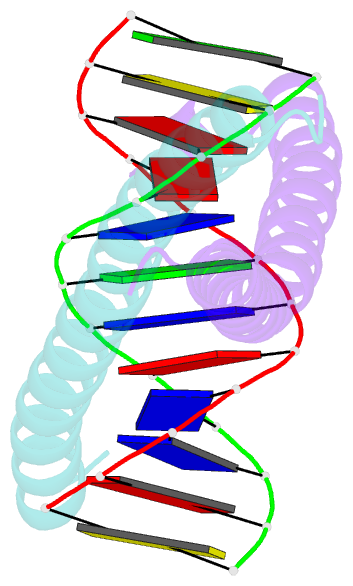Summary information and primary citation
- PDB-id
- 8k86; SNAP-derived features in text and JSON formats;
DNAproDB
- Class
- DNA binding protein-DNA
- Method
- X-ray (2.06 Å)
- Summary
- Crystal structure of nfil3 in complex with ttatgtaa DNA
- Reference
- Chen S, Lei M, Liu K, Min J (2024): "Structural basis for specific DNA sequence recognition by the transcription factor NFIL3." J.Biol.Chem., 300, 105776. doi: 10.1016/j.jbc.2024.105776.
- Abstract
- The CCAAT/enhancer-binding proteins (C/EBPs) constitute a family of pivotal transcription factors involved in tissue development, cellular function, proliferation, and differentiation. NFIL3, as one of them, plays an important role in regulating immune cell differentiation, circadian clock system and neural regeneration, yet its specific DNA recognition mechanism remains enigmatic. In this study, we showed by the ITC binding experiments that NFIL3 prefers to bind to the TTACGTAA DNA motif. Our structural studies revealed that the α-helical NFIL3 bZIP domain dimerizes through its leucine zipper region, and binds to DNA via its basic region. The two basic regions of the NFIL3 bZIP dimer were pushed apart upon binding to DNA, facilitating the snug accommodation of the two basic regions within the major grooves of the DNA. Remarkably, our binding and structural data also revealed that both NFIL3 and C/EBPα/β demonstrated a shared preference for the TTACGTAA sequence. Furthermore, our study revealed that disease-associated mutations within the NFIL3 bZIP domain resulted in either reduction or complete disruption of its DNA binding ability. These discoveries not only provide valuable insights into the DNA binding mechanisms of NFIL3 but also elucidate the causal role of NFIL3 mutations in disease pathogenesis.





